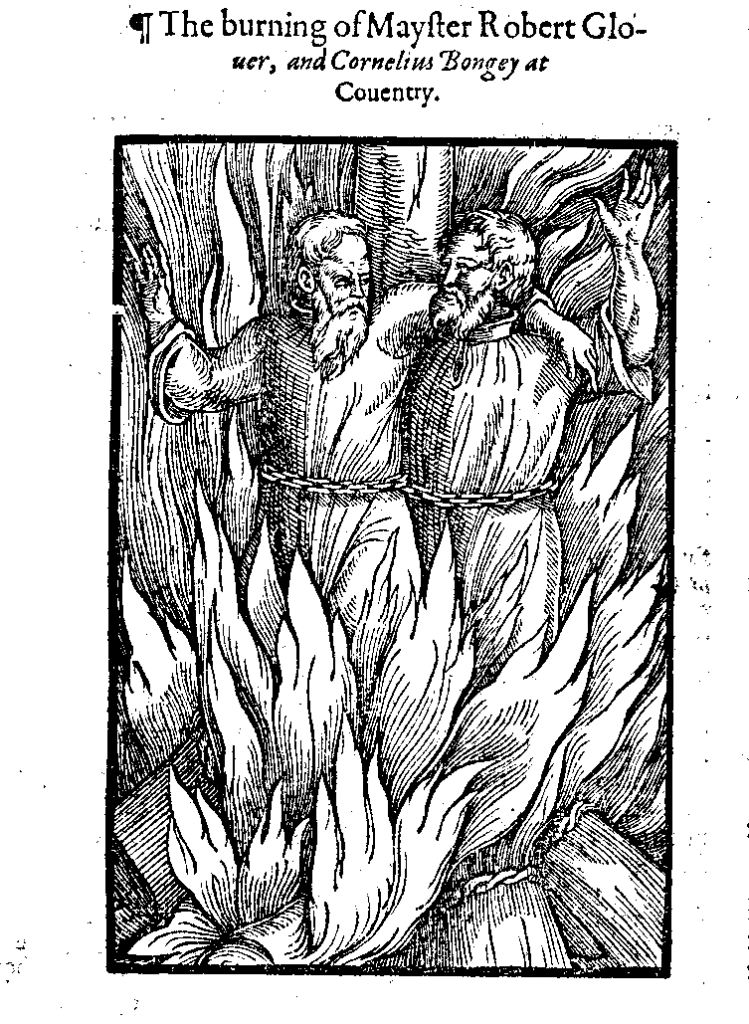
CovSoc member Peter James has been researching his ancestors and came across some interesting information about the Coventry martyrs. Peter writes…..
My maternal grandmother Edith Haddon grew up in Foleshill and worked at Cash’s. She belonged to the 4th generation of Haddons who were silk or elastic weavers in Foleshill. Her family were originally from Mancetter located on Watling Street in North Warwickshire (the site of an ancient Roman settlement). Her 8 x great grandfather Thomas Haddon married Alice Wilson on 25th September 1600 at St. Peter’s Church in Mancetter. The church had been founded in the Saxon era around 930 AD.
A few years ago my cousin and I visited St. Peter’s Church. The church was locked so we looked around the graveyard for any Haddons buried there. The only Haddon we found was a local stone mason who had engraved HADDON ATHERSTONE on the lower rear side of some headstones. What surprised us was the material used for all the headstones. They were all made of grey slate!
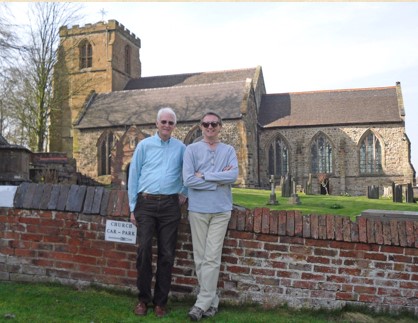
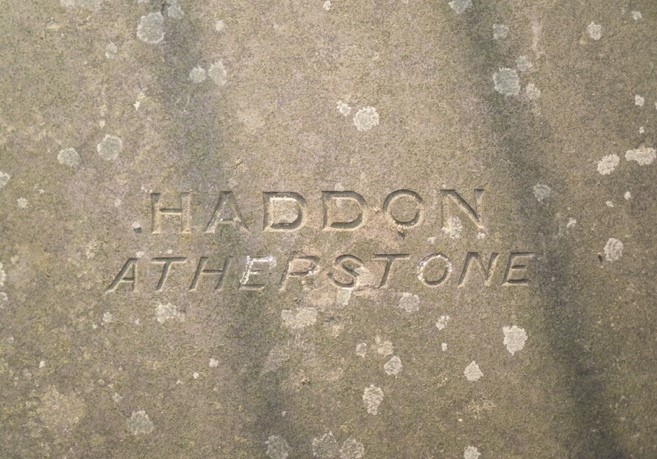
Next to the church stood eleven almshouses and beyond them a manor house. The manor house looked like an interesting building of some substance so I decided to research the history of it.
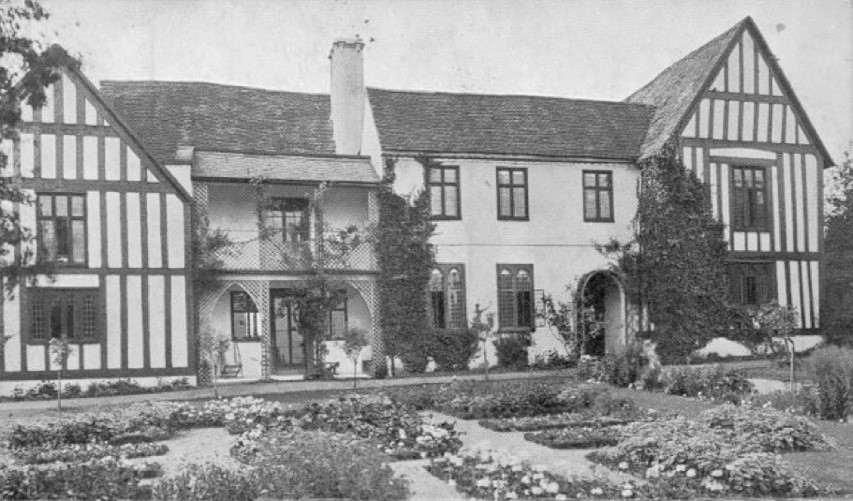
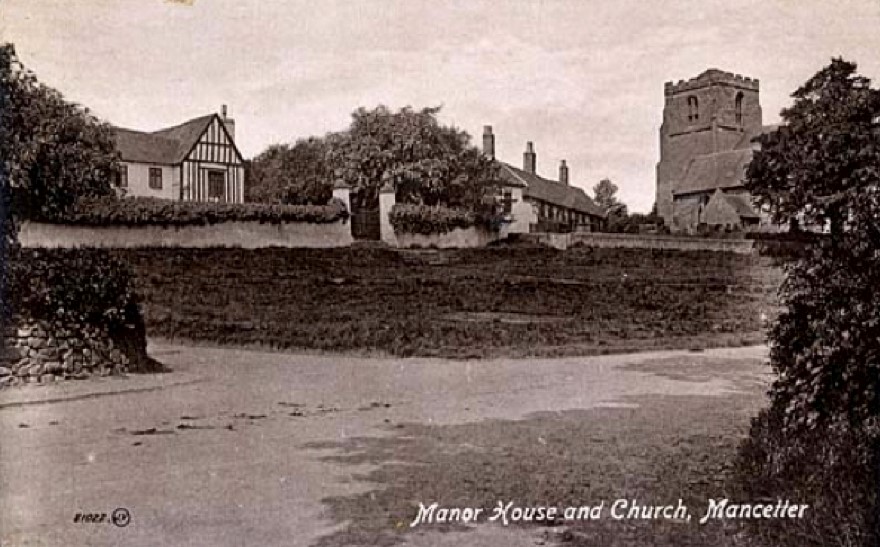
Mancetter Manor House is a timber framed building which was built around 1330. A large proportion of the original structure has survived following a number of alterations through the centuries. It was the home of the Glover family for over 100 years. Robert Glover was born in Mancetter, educated at Eton College and later entered King’s College Cambridge in 1533 earning a BA in 1538 and a Masters degree in 1541 and was a fellow until 1543.
Radulph the Bishop of Lichfield and Coventry sent a sheriff and others to Mancetter to apprehend John Glover the elder brother of Robert. When he couldn’t be found the officers entered an upper chamber of the manor house. They discovered Robert who was ill in bed so arrested him instead and took him to Coventry where he was imprisoned.
On 20th September 1555 Robert Glover was burnt at the stake in Coventry along with Cornelius Bungey a Coventry Capper (hatmaker). They were both Protestants who had been found guilty of heresy.
Robert Glover was married to Mary a niece of Hugh Latimer who was Bishop of Worcester. He too was burned at the stake just a few weeks later on 16th October 1555 in Oxford.
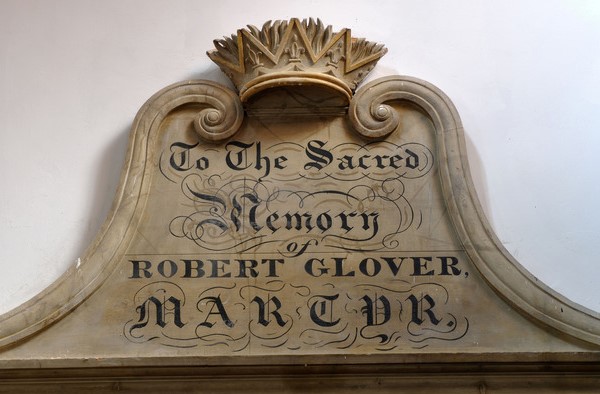
In Coventry in 1908 public pressure caused a mayoral committee to be formed to discuss a monument recognising all of the city’s martyrs. An appeal raised £200 and in 1910 a Martyrs Memorial was erected. Made of Cornish granite it featured a Celtic Cross on top of a monument standing 20 feet tall. The site was a public garden situated between Little Park Street and Mile Lane.
Eight people were martyred during the reign of Henry VIII then another three while Mary Tudor ruled the country. In the Sixteenth century the execution site was in Cheylesmore outside the city wall.


In addition to the stone memorial the events and characters involved are remembered in some of Coventry’s street names :- Martyrs Close, Lollard Croft, Joan Ward Street, Hawkins Road, Wrigsham Street, Hockett Street, Bond Street, Silksby Street, Lawrence Saunders Road and Glover Street.
There is information about the Martyr’s mosaic on the Coventry Society website.
